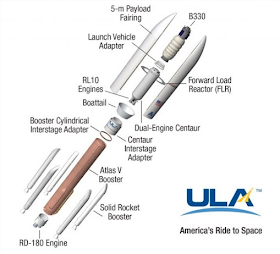Another Honor's Night was recently held at the Space Center. Tradition dictates the Space Center hold Honor's Nights every month or two to recognize and honor the Center's volunteers and staff. Many of you were once volunteers and remember attending an Honor's Night. Perhaps you received an honor: your black t-shirt, your one year pin, your five year pin, your ten year pin, your blue collared shirt, your green flight adult staff shirt, your Voyager, Magellan, Phoenix, Odyssey, or Galileo pass. Occasionally a Silver Chalice of Zod was awarded to someone so amazing, they defied common sense and logic in their devotion to the cause.
I keep attending Honor's Nights hoping sometime in the future I'll be awarded a yet to be created 25 year pin. It is only fitting, considering the hundreds of awards I've given out over the years that I should get one myself; just saying...
James Porter, Space Center Director Extraordinaire, greeted the congregation with his consistent and appreciated brand of admiration, humor, and sarcasm. Sarcasm is a time proven trait all Space Center directors must have to mentally and emotionally succeed in this line of work. We (speaking on behalf of almost everyone present) wanted to listen to what he had to say, but kept getting distracted by a velvety soft Lorraine Houston blanket folded nicely next to Mr. Porter on the front table. We all knew somebody in the room was about to experience a life changing moment. We wondered who it was. Mr. Porter kept us waiting.
Devin (right) was called to the front to present Tyler (left) with his Odyssey pass and pin. Tyler was overjoyed to the point of exhaustion when he realized he'd be featured in The Troubadour. Devin took it in stride, having been a regular on the blog for several years.
Katy was the next honoree. She too was awarded her Odyssey pass and pin. Congratulations to both Tyler and Katy for their achievement.
So, if neither of them got the blanket, who would? Mr. Porter kept us guessing.
Lizzy was called to the front of the room. Was Lizzy getting the blanket? Mr. Porter reached toward the blanket, but stopped short. Lizzy got her two years of service pin. Congratulations Lizzy!
The unclaimed blanket patiently waited.
And then it happened. Mr. Porter, sensing high levels of anticipation in the crowd, launched into a moving tribute to Connor Larsen. With the skill of a television evangelist, Mr. Porter pulled emotions from the depths of our souls we didn't know we had in his epic tale of the boy who survived overwhelming odds to become the man we know as Connor. And with a roof raising shout of "Hallelujah!" Connor claimed his blanket. And like a wand to its wizard, it claimed him. Mrs. Houston was present to see her blanket find its intended.
"I don't understand," one young volunteer said. "It's just a blanket!" The room went silent. Mr. Porter nodded. Jon asked the young man to accompany him to the door.
"He doesn't understand our ways," Mr. Porter explained. "He's young. Please excuse him."
With the Ceremony of the Blanket concluded, Mr. Porter gave the evening's keynote address.
"Tonight, I present to you, the new Volunteering Awards System," he said. Several slides outlining the new program followed with explanation.
The different "Rank & Titles" for the patches are listed below.
Apprentice = Intrepidos Nisus (2 Years or 100 Hours of Service)
Journeyman = 5 Years of Experience
Master = 10 Years of Dedication
Starfighter = 100 Hours
Hitchhiker = 500 Hours
Defender of the Universe = 1000 Hours
Timelord = 2000 Hours
These are still just the sample images, the final draft has not yet been completed.
The thought right now is to go forward with a new volunteer slogan, "Intrepidos Nisus." Translated it means undaunted efforts. It embodies the time and effort that goes into volunteering and how many of us have developed new skills as we have overcome shyness or other fears in order to make the experience better for patrons. Part of the purpose of the volunteer program is to learn new skills and stretch to earn those passes, and sometimes that path has some disappointing bumps in the road. One definition of undated is: not intimidated or discouraged by difficulty, danger, or disappointment.
I was impressed with the presentation and the program. The new award system is well thought out and will be effective.
The evening concluded with Mr. Porter's speech. Attendees were encouraged to take a piece of leftover birthday chewing gum on their way out the door. Mr. Porter's eldest son recently celebrated his birthday. The gum had to go. I obliged.
Mr. Williamson
By Mark Daymont
Spacerubble.blogspot.com
Bigelow and ULA Deal: Space Real Estate For Sale!
The Shape of things to come: A Bigelow B330 station in orbit with commercial capsule and solar powering unit attached. Credit: Bigelow Aerospace.
This is a good week. And for space enthusiasts, our tomorrows are looking brighter! On April 11, Bigelow Aerospace (producer of the inflatable space module idea) and ULA (United Launch Alliance, the corporation that launches the Atlas V rocket and payloads) jointly announced their plan to launch into Earth orbit two of Bigelow's giant B330 inflatable space stations. The modules would be launched aboard the reliable Atlas V rockets, and provide, for the first time, a commercial (non-governmental) foothold in low Earth Orbit that could be rented by corporations or countries for space research or space tourism.
Artist's rendition of how the BEAM will look when attached to the ISS. Credit: Bigelow Aerospace.
Currently, NASA is about to test the first ever Bigelow Expandable Activity Module (BEAM) when it removes the collapsed module from the recently arrived SpaceX Dragon cargo ship, and attach it to the U.S.-built Tranquility module on the ISS. It will be deployed, then studied for a two-year experiment that will help convince NASA engineers of the viability of using the expandable modules for future space station design. To this date, Bigelow has already had two expandable test units launched into free-floating orbits for testing, and they worked excellently.
Cut-away view of the inside of the B330 Module. The size advantage is obvious. Credit: Bigelow Aerospace.
Bigelow calls the B330 "a game changer," and it is. The 330 refers to 330 square feet of room inside the module. It has a central, or core unit that includes the electronics and equipment. The outside walls of the module are expanded out from the core, and are made of up to 36 layers of vectran, which is far stronger than kevlar and more flexible. The outer layers would provide better protection from radiation and micrometeroid strikes than the current walls of space station modules. With 330 square feet, a B330 has almost three times the space of the US Destiny module on the ISS. It will be fitted with a docking port compatible with the different commercial spacecraft under development as well as NASA's Orion and the Russian Soyuz.
NASA's assistant director Lori Garver inside a mock-up of a Bigelow module gives an idea of the spaciousness inside the module. Credit: NASA.
Expanded arrangement showing how the B330 would be transported aboard the Atlas V rocket. Credit: ULA.
To get the B330s into space, ULA plans to use the Atlas V rocket with its large payload version with expanded fairings to protect the large B330 core assembly. For extra propulsion, the rocket would be assisted with 5 solid rocket boosters. With these two facilities in space, ULA predicts additional flights when its Atlas rockets are used for launching commercial capsules (such as the Boeing CST100) to dock with the modules.
Expanded space station proposal beyond the B330.
Credit: Bigelow Aerospace.
The Bigelow/ULA plan schedules these modules to be placed in Low Earth Orbit in 2020. Current NASA plans suggest that the ISS project would be terminated by 2024. The ability to install a B330 onto the ISS has been brought up as a way to extend the life of the station and open it to a greater use by other corporations and other countries' space programs. With two additional stations in orbit, we will finally have additional destinations for commercial programs besides a restricted, government-controlled space laboratory. Whether for business use or as a "space hotel" for space tourism programs, the B330s will provide the first available "real estate" to be purchased in orbit. I have always said that our space programs will be very limited until someone figures a way to make money in space. Just like the birth of aviation, mere flights for the experience were not enough to provide room for the development of airlines and airliners; people wanted a place to go to and visit.
Another space station concept. Add a propulsion module and it could fly to Mars. Credit: Bigelow Aerospace.
Bigelow modules also offer opportunities for human exploration of the solar system. No one would want to fly in a cramped Orion capsule all the way to Mars or beyond. But add some Bigelow modules, and you'll have the space you need to live in on those long journeys. There are even plans for placing variants of the modules on the lunar surface to create the first lunar permanent base.
Orbiting the Moon: Two B330 modules with a couple of Orion capsules and some power units attached. Our first Lunar station in orbit? Credit: Bigelow Aerospace.
The success of Bigelow module structures will make an expansion of the space program achievable and more affordable. One can easily imagine how popular it will be to have a space hotel in orbit of the Moon with a short 2-day flight to the station and a 2-day return. Yes sir, space travel is about to get A LOT more interesting!
The Imaginarium
































































No comments:
Post a Comment